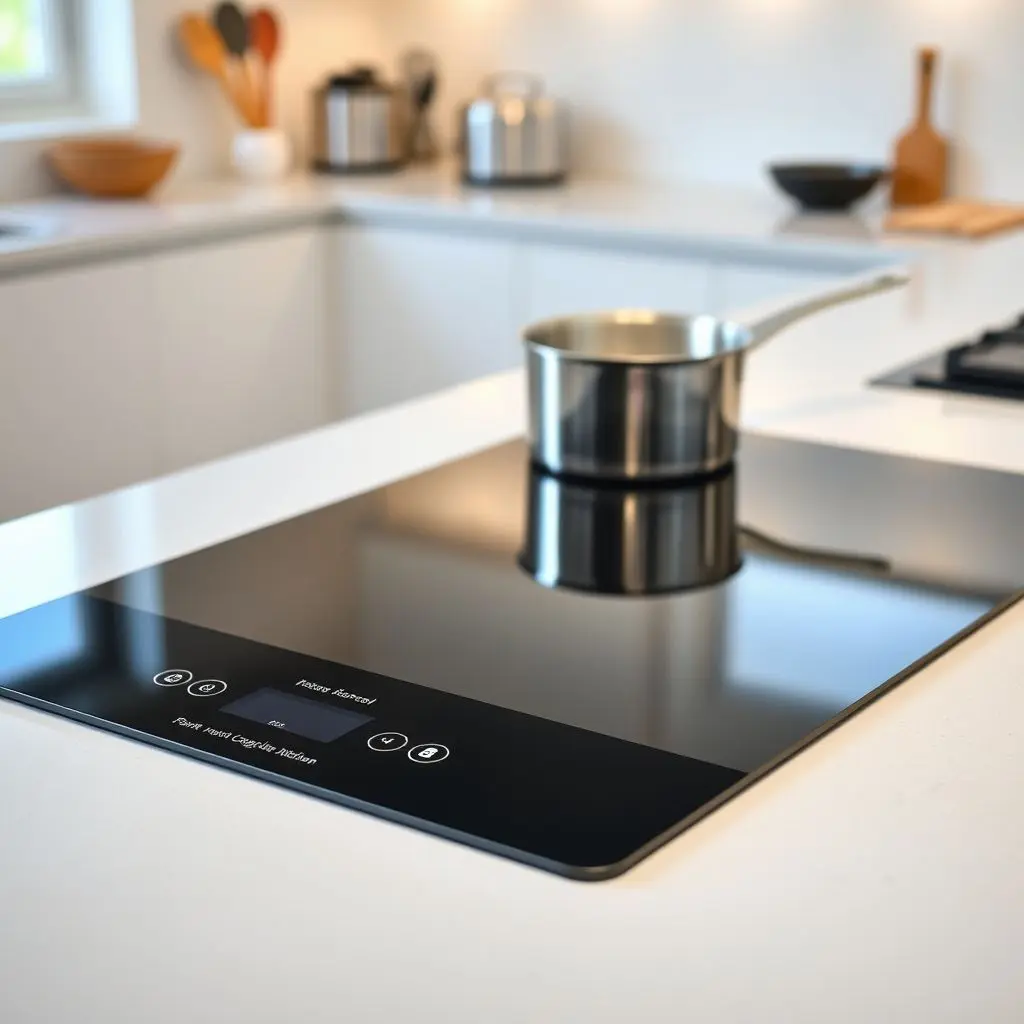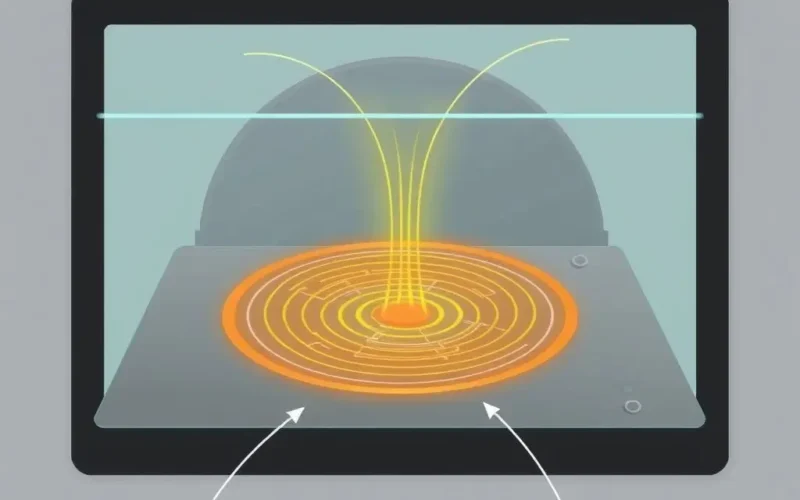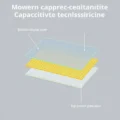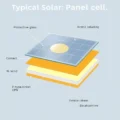Have you ever marvelled at how an induction cooktop seems to conjure heat out of thin air? There’s no visible flame, no glowing electric coil – just a sleek, cool surface that somehow makes your pan sizzling hot in moments. What kind of kitchen magic is this?
Forget wands and spells; the real power source is pure science: electromagnetism. Underneath that smooth, easy-to-clean glass surface lies a hidden world of physics, working tirelessly to cook your meals with remarkable speed and efficiency.
Table of Contents
Beneath the Surface: The Heart of the Operation
Peel back the sleek exterior of an induction cooktop, and you’ll find a sophisticated system. The key component is a coil made of copper wire, positioned directly below the cooking zone you place your pan on. When you switch the cooktop on, an electronic circuit sends an alternating electric current through this coil.
Now, this is where the magic begins. An alternating electric current isn’t static; it constantly changes direction. When current flows through a coil, it generates a magnetic field around it. Because the current is alternating, the magnetic field it produces is also alternating – it rapidly expands, collapses, and reverses direction many thousands of times per second.
Imagine invisible waves of magnetism pulsing upwards from the cooktop surface. This rapidly fluctuating magnetic field is the engine of induction cooking.
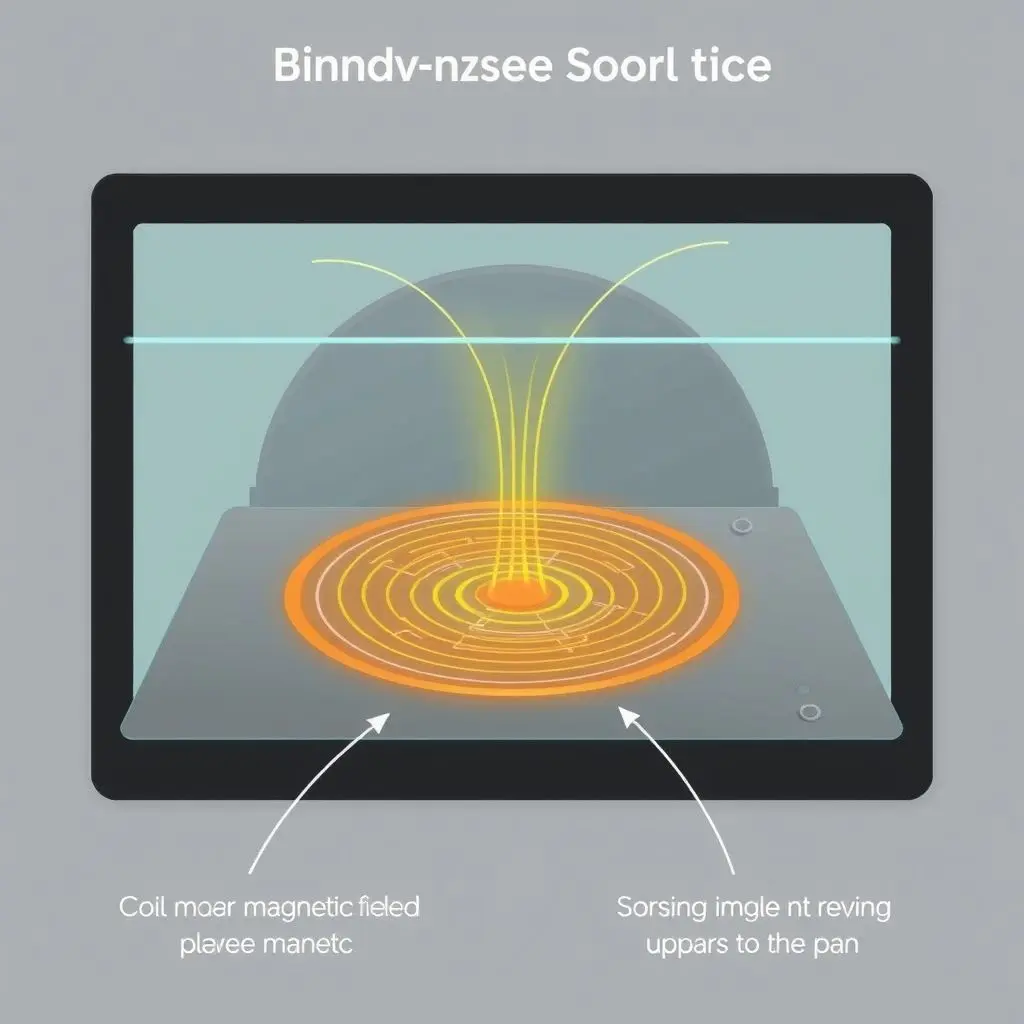
The Pan’s Role: Not Just a Container
This is the crucial part: for induction to work, your pan needs to be made of a material that interacts with a magnetic field. This means pans made of ferrous metals – primarily iron or certain types of stainless steel that contain iron. Aluminium, copper, glass, and ceramic pans won’t work on their own because they aren’t magnetic.
When you place a suitable, ferrous pan onto the induction surface within the oscillating magnetic field, something incredible happens within the metal of the pan itself.
Inducing the Heat: Eddy Currents and Resistance
As the magnetic field sweeps through the bottom of your ferrous pan, it induces swirling electric currents directly within the metal. These induced currents are known as eddy currents. Think of them like tiny whirlpools of electricity circulating inside the pan’s base.
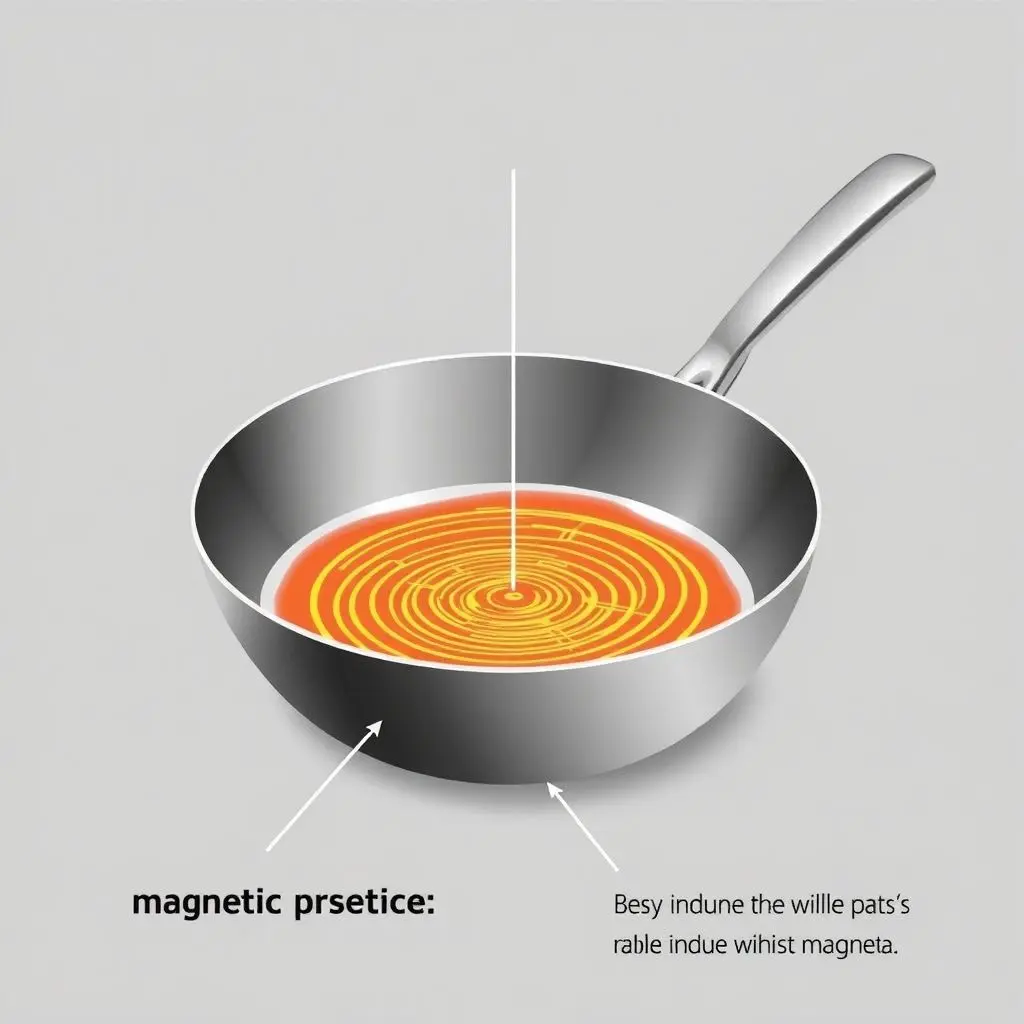
Now, metals aren’t perfect conductors; they have some resistance to the flow of electricity. As these powerful eddy currents surge through the resistive metal of the pan, they encounter this resistance. Just like electricity flowing through the filament of an old incandescent light bulb causes it to heat up due to resistance, these eddy currents dissipating energy as heat.
And because these currents are generated *within* the pan itself, the heat is created right where you need it – at the bottom of the cooking vessel. The cooktop surface itself remains relatively cool, only getting warm from the heat radiating *back* from the pan.
Pan Heats Pan: The Core Principle
So, the fundamental principle of induction cooking is this: the cooktop generates a magnetic field, and that magnetic field causes the pan to generate its own heat from within. The pan effectively becomes its own heating element!
This is why induction is so fast and efficient. There’s no intermediate step of heating a burner, which then heats the air, which then heats the pan. The energy transfer is direct and incredibly quick.
Seeing is understanding, sometimes! For a quick visual explanation of this fascinating process, take a look at this short video:
Why Induction Stands Out
Understanding *how* it works sheds light on *why* induction cooking offers significant advantages:
- Incredible Speed: Because heat is generated directly in the pan, water boils and food heats up much faster than on gas or traditional electric stoves.
- Superior Efficiency: Very little energy is wasted heating the surrounding air or the cooktop surface. Almost all the energy goes directly into the pan.
- Precise Temperature Control: The electronic circuits controlling the current in the coil allow for very fine adjustments to the magnetic field strength, giving you precise control over the heat level.
- Increased Safety: The cooktop surface doesn’t get searing hot (only from residual heat from the pan), reducing the risk of accidental burns. The heating stops almost instantly when the pan is removed.
- Easy Cleanup: Spills are less likely to bake onto the cool surface, making cleanup a breeze.
The Pan Puzzle: Compatibility is Key
The main consideration when switching to induction is pan compatibility. You need cookware with a magnetic base. A simple test? If a magnet sticks firmly to the bottom of your pan, it will work on induction. Cast iron, enamel-on-steel, and many stainless steel pots and pans are induction-compatible. Pans made purely of aluminium, copper, or glass will not work unless they have a bonded layer of magnetic material in the base.
Wrapping It Up
So, the next time you see an induction cooktop effortlessly bringing water to a rapid boil, you’ll know it’s not magic. It’s a brilliant application of physics – using alternating magnetic fields to induce currents and create heat directly within your pan. It’s a testament to how invisible forces can be harnessed for incredibly practical and efficient results in our everyday lives.
Frequently Asked Questions About Induction Heating
Q: Is induction cooking safe?
A: Yes, it is generally considered very safe. The surface only heats up from the residual heat of the pan, significantly reducing burn risk. The heating element itself doesn’t get red hot like traditional electric coils or have an open flame like gas. The magnetic fields produced are very localized and considered safe for household use, although individuals with pacemakers or other medical implants should consult with their doctor and the device manufacturer for guidance.
Q: Why don’t my old pots and pans work on induction?
A: Your old pans likely aren’t made of a ferrous (iron-containing) material. Induction requires the pan’s material to interact with the magnetic field to generate heat. Pans made of pure aluminium, copper, or glass won’t have this interaction.
Q: Can I use an induction adapter plate?
A: Yes, induction adapter plates are available. These are essentially a ferrous plate that sits on the induction cooktop. You place your non-induction pan on the adapter plate. The adapter plate heats up via induction, and then transfers that heat to your pan via conduction, much like a regular electric burner. While this allows you to use non-compatible pans, it is significantly less efficient than using a compatible pan directly on the cooktop because you add an extra step in the heat transfer process.
Q: Does induction cooking use more electricity?
A: No, induction cooking is actually very energy-efficient. While it uses electricity, it transfers energy to the pan with very little loss compared to gas or traditional electric stoves. This means it uses less overall energy (and often less electricity measured in kWh per cooking task) to achieve the same result, saving energy and potentially reducing your electricity bill.
Q: Do induction cooktops emit radiation?
A: Induction cooktops emit electromagnetic fields, not ionizing radiation like X-rays. These fields are low-frequency and fall within safety guidelines for household appliances. They are most intense directly above the burner and decrease rapidly with distance. As mentioned regarding safety, individuals with specific medical implants should seek professional advice.
